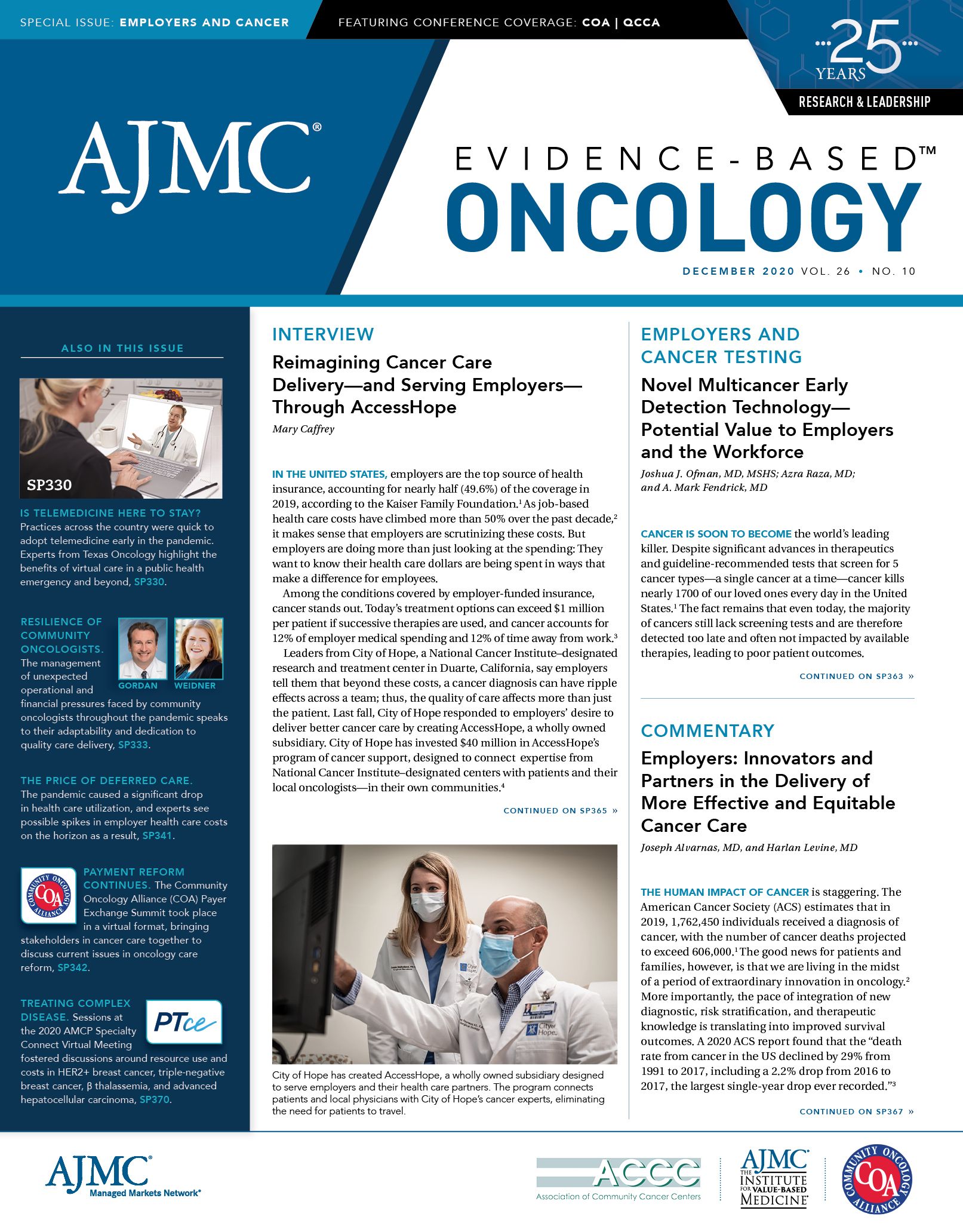- Center on Health Equity & Access
- Clinical
- Health Care Cost
- Health Care Delivery
- Insurance
- Policy
- Technology
- Value-Based Care
Bringing Value-Based Insurance Design to Oncology: The New “Skin in the Game”
Value-based insurance design has made gains in oncology, but there's more work to do.
For a time, managed care preached that patients should pay some part of every service or medication they receive, lest they not have “skin in the game.”
But A. Mark Fendrick, MD, director of the Center for Value-Based Insurance Design at the University of Michigan and co-editor-in-chief of The American Journal of Managed Care®, feels that there are some services, screenings, and medications that are so essential to life and health—and so key to avoiding long-term costs—that it’s cost-effective to skip out-of-pocket costs altogether.
It starts with identifying “high value” and “low value” care, because eliminating waste can pay for the screenings that save lives down the road, Fendrick said. In oncology, he said making these distinctions is hard work and takes courage, as he led a discussion on the state of value-based insurance design (VBID) in oncology, during the second day of the Community Oncology Alliance Payer Exchange Summit. Joining Fendrick were:
- Neil Goldfarb, president, CEO, Greater Philadelphia Business Coalition on Health
- Alti Rahman, MHA, MBA, CSSBB, practice administrator, Oncology Consultants
- Barry Russo, MBA, CEO, The Center for Cancer and Blood Disorders, based in Forth Worth, Texas
“I like to think VBID is the new skin in the game,” Fendrick said, explaining that while it did not take a pandemic to show the importance of the idea, the effects of coronavirus disease 2019 (COVID-19) on oncology practices certainly highlight the need to tear down every barrier to cancer screening, as attendees heard evidence of skipped mammograms and colorectal cancer screenings—which, in turn, have led to patients showing up now with more advanced cancers.
Ending cost-sharing for key cancer screenings was a big win for VBID in the Affordable Care Act (ACA), but Fendrick said the work wasn’t done: more recently, the center has worked to implement an Internal Revenue Service rule that allows services and drugs for certain chronic conditions to be coverage “pre-deductible.”
“As everyone in the oncology field knows, when the year turns and deductibles reset our oncology patients are really in very tough financial terms,” he said, as patients often had to pay list price for cancer drugs, even if they’ve been taking them for a while. CMS has slowly incorporated more VBID concepts into more payment designs, including some for 2021.
“I’m curious to see how the oncology community would feel about a more nuanced approach to spending,” Fendrick said.
Goldfarb said he’s endorsed VBID for some time, but the challenge for employers is, “How do you actually go about doing this?” And even if VBID designs bring savings, is it worth the effort? Overcoming inertia is tough, he said, in part because, “We don’t necessarily know what is high-value or low-value care in oncology, particularly when we get beyond prevention to treatment and survivorship.”
Rahman said there are multiple considerations:
(1) getting VBID to work requires sharing information, and there are federal and state laws that can limit transfer;
(2) the transition of financial risk cannot be “passive,” because the decision-making drives movement toward high-value care;
(3) more transparency is needed, because “it’s still very difficult for patients to understand what they’re paying for; and
(4) much of what affects cancer care happens first in primary care or other specialty care, and while there are alternative payment models in these areas, they aren’t yet aligned with oncology models.
The mixed progress means that patients can still face huge out-of-pocket costs, which Fendrick says leads to results that no one should find acceptable. “I just think that my patient should not have to have a bake sale, or start a Kickstarter campaign to be able to get a cancer drug that she and her oncologist agree was designed specifically to treat her tumor,” he said.
But Russo said the hunt for cost savings, aided by technology, can yield insights of “low-value care” that would go undiscovered without the pressure of shared risk. “Clearly, there's some low hanging fruit that's easy to identify. But then when you get into the weeds, it's going to be a whole lot more complicated. And the definition of that really evolves,” he said.

Blister Packs May Help Solve Medication Adherence Challenges and Lower Health Care Costs
June 10th 2025Julia Lucaci, PharmD, MS, of Becton, Dickinson and Company, discusses the benefits of blister packaging for chronic medications, advocating for payer incentives to boost medication adherence and improve health outcomes.
Listen
